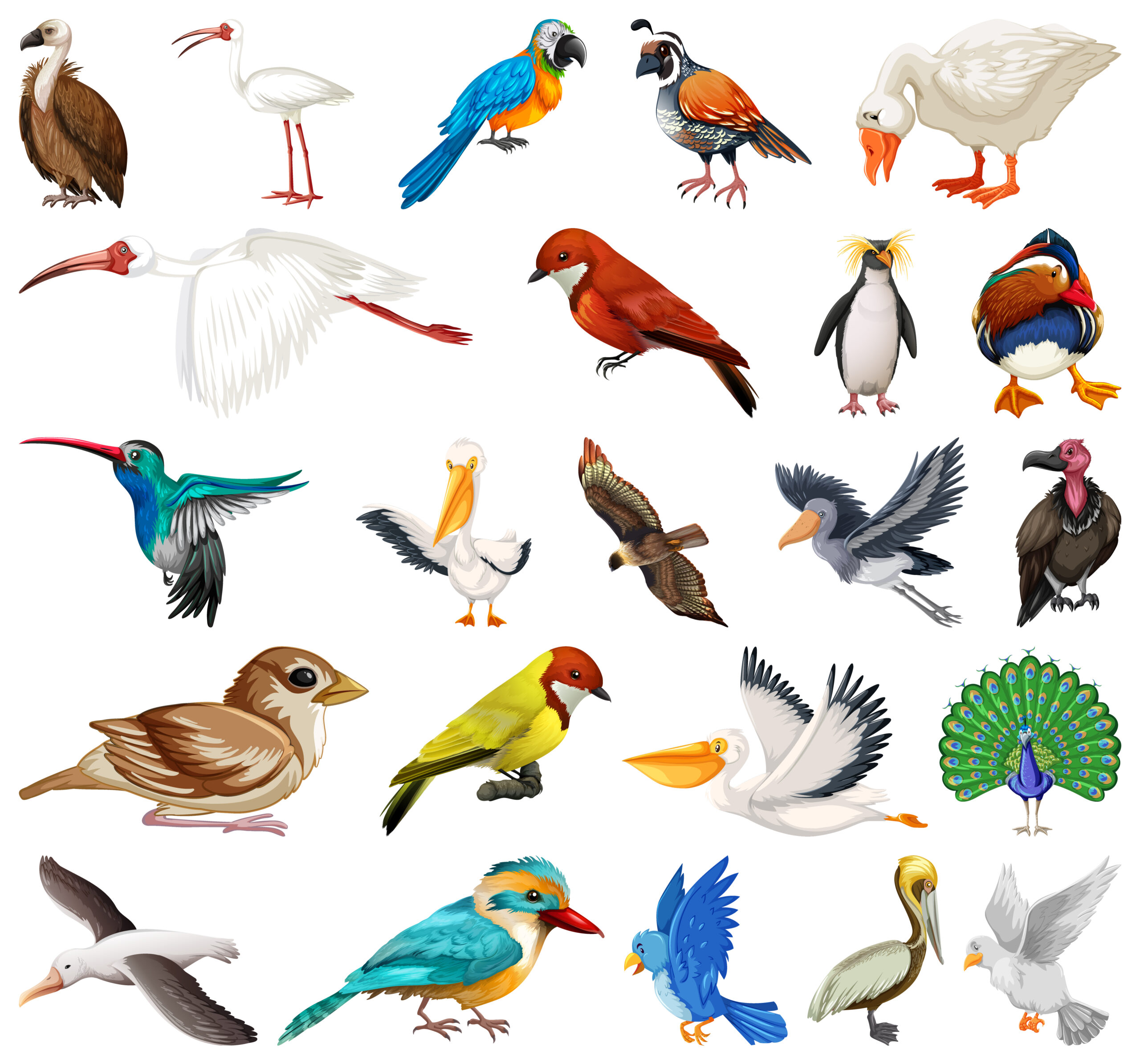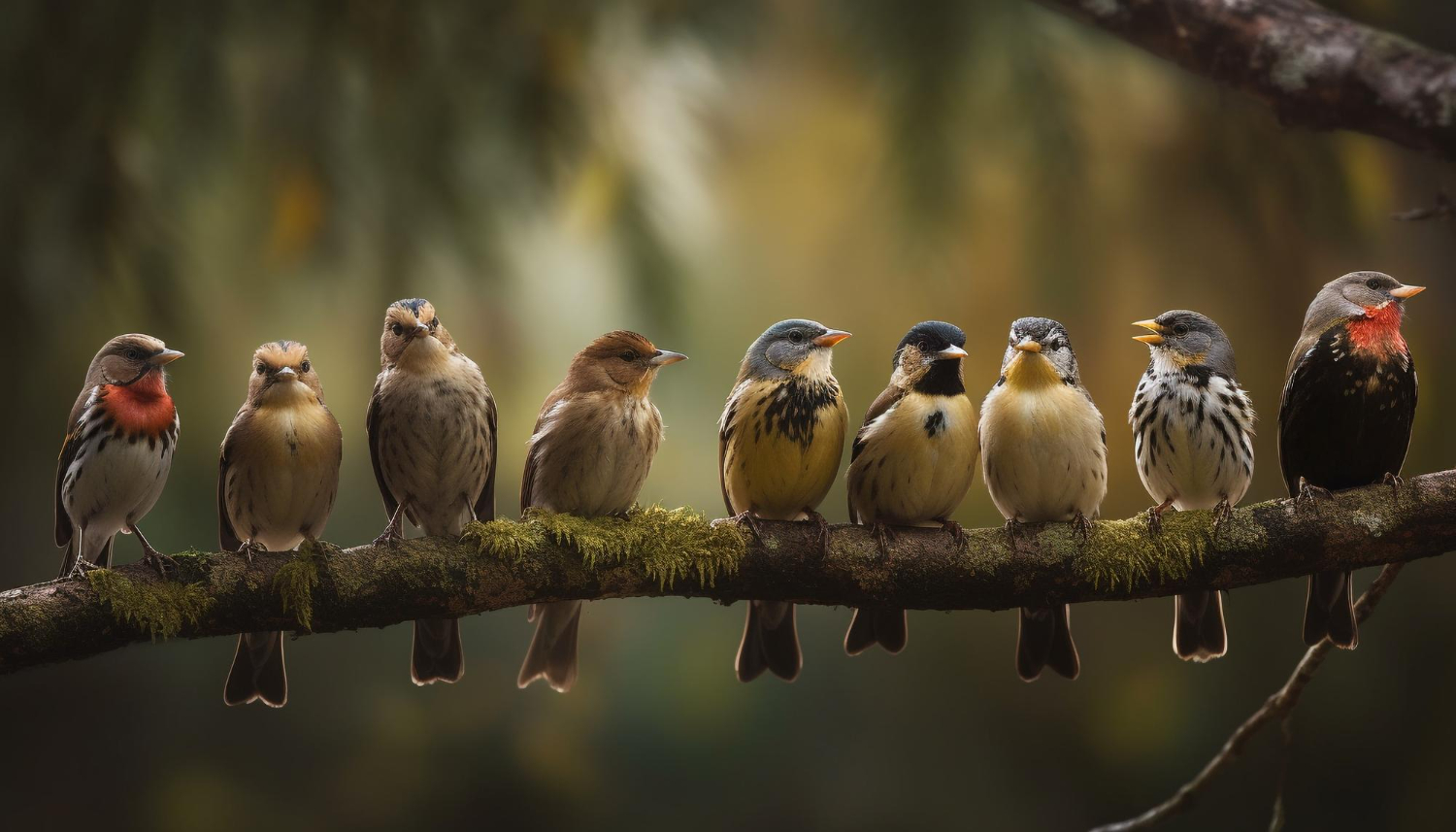Birds are among the most interesting animals on the planet, and many of them possess crests- and among those, the many different adaptations to the woodland environment possessed by the beautiful crested woodland birds make them particularly interesting! If you are a bird lover or just love the magical elements of nature, this list will help you explore the beautiful crested woodland birds found in the world- the Top 10 most beautiful Crested woodland birds!
1. Crested Woodland Bird Tit (Lophophanes cristatus)
The crested tit is a small but attractive crested bird that inhabits Europe’s coniferous forests. The distinctive black-and-white crest contrasts with its soft brown texture. Although small, it is quite an energetic bird, darting between branches in search of insects and seeds. Crested tits use vocalizations and crest movements to communicate, showing off their crest to warn of predators or attract mates.

. Habitat: Coniferous forests throughout Europe
. Diet: Insects and seeds
. Characteristic: The black-and-white crest used for communication
2. Blue Jay (Cyanocitta cristata)
The blue jay is a well-known crested woodland bird native to North America, exhibiting deep blue feathers with white and black accents. Its most noticeable feature is its blue crest, which is capable of being raised or lowered depending on the bird’s mood. Blue jays are highly intelligent birds, often mimicking the calls of other birds, even those of predators to frighten away competitors.
Habitat: Forests and woodlands in North America
Diet: Seeds and nuts, and insects
Special Feature: Vocal mimicry and striking blue crest.
3. Great Curassow (Crax rubra)
The great curassow is a large crested woodland bird from Central and South America and is characterized by an eye-catching curled crest. Further enhanced by its large size, it is one of the most identifiable woodland birds in tropical forests because of its size and unique crown of curls. Often observed foraging on the forest floor, great curassows rely on their powerful legs to procure fallen fruit or small animals.
Habitat: Tropical forests of Central and South America
Diet: Fruits, seeds, and small animals.
Special Feature: Unique curly crest.
4. Cockatoo (Family: Cacatuidae)
The cockatoo is one of the most instantly recognizable crested birds, known for its large and highly interactive crest. Despite being generally associated with tropical environments, cockatoos are present in forested and subtropical environments. The cockatoo has the ability to raise its crest when excited or defensively, adding additional utility to an otherwise ornamental structure. Socially, cockatoos have the ability to form lifelong social bonds with mates and are known to be highly intelligent.
Habitat: Forests of Australia, Southeast Asia and bordering islands.
Diet: Seeds, fruits, and insects.
Special Feature: Large and expressive crest for signaling.
5. Steller’s Jay (Cyanocitta stelleri)
The Steller’s jay is a striking crested woodland bird with bold colors found in western forests of North America. It has dark blue and black feathers and its tall crest certainly enhances the bird’s fierce look. Like its close relative, the blue jay, the Steller’s jay is a curious and intelligent bird quickly engaging in mimicry of other birds or even animals. One distinct feature is the Steller’s jays call, aptly similar to another call and a sharp crest.
Habitat: Western forests of North America
Diet: Nuts, seeds, and insects
Special feature: Tall crest and strong mimicry abilities
6. Hoopoe (Upupa epops)
The hoopoe is a gorgeous crested woodland bird characterized by its crown-like crest of orange and black tipped feathers. Found within Europe, Africa and Asia, the hoopoe is frequently observed searching the ground for insects.
The fan-like crest is raised whenever the bird is in a state of alarm or excited, adding to effectively a gorgeous bird. The bold color patterns, along with its unique crest are a symbol of beauty across many cultures.
Habitat: Woodlands and grasslands in Europe, Africa, and Asia
Diet: Insects, larvae, small reptiles
Special feature: Crown-like orange and black crest
7. Pileated Woodpecker (Dryocopus pileatus)
The pileated woodpecker is one of the larger woodpeckers in North America and is a crested bird typically found in forests. Identifying the pileated woodpecker, an easily identifiable bird by its striking red crest, is a great bird to identify in your area. The pileated woodpecker has a strong beak allowing it to drill deep into the trees and find insects, usually creating large holes used later by other animals for shelters. The pileated woodpecker’s beak and distinct warm red crest makes it one of the heaviest birds to see from a visual perspective in the forest.
Habitat: Forests of North America
Diet: Insects, particularly carpenter ants
Special Feature: Powerful beak, and warm rich crested red.
8. Royal Flycatcher (Onychorhynchus coronatus)
The royal flycatcher may be a small crested woodland bird , inhabiting the tropical forests of Central and South America, but what it lacks in size, it will make up for in the shape of its amazing crest. When the regal flycatcher feels threatened, or, alternatively when the regal flycatcher engages in courtship display, it will raise its fan-shaped crest. The bright red or orange coloring of the slightly rounded crest, toned in the color of black or blue, juxtaposes nicely with the generally modest coloring of the flycatcher. The characteristically dramatic displays of the regal flycatcher will make appreciate for birding enthusiasts.
Habitat: Tropical forests of Central and South America
Diet: Insects and small invertebrates
Special Feature: Dramatic fan-shaped crest
9. Sulphur-crested Cockatoo (Cacatua galerita)
Easily recognizable as yet another member of the cockatoo family, the sulphur-crested cockatoo is a well known, crested woodlan bird, native to Australia and New Guinea. The sulphur-crested cockatoo is certainly striking, being bright white with a yellow crest. Sulphur-crested cockatoos are very social and can be being observed in Australian Parasite form large flocks. In addition to being easy to find and observe in the wild, their mimicry of human speech has also lead to their popularity as pets.
Habitat: Forests and woodlands of Australia and New Guinea
Diet: Seeds, fruits and nuts
Special Feature: Bright yellow crest and exceptional mimicry skills
10. Malabar Grey Hornbill (Ocyceros griseus)
The malabar grey hornbill is a distinct crested woodland bird from the Western Ghats of India. It has a long curved beak with a short crest, resulting in an impressive outline when soaring through the forest. Albeit a relatively modest color palette compared to other hornbills, the malabar grey hornbill remains a graceful bird making it beautiful to observe in its natural habitat.
Habitat: Western Ghats of India
Diet: Fruit and small animals
Unique Feature: Long curved beak and short crest
Conclusion
The family of crested woodland birds is a diverse group with numerous species worldwide possessing their unique charms and features. The smallest species, the crested tit, and the largest, the great curassows, are each magnificent in their own way while playing an important ecological role in the ecosystems they inhabit. Crests work as a mode of communication but as displays from mates and potentially for camouflage. If encountered in a natural environment, they are a rewarding observation which creates awe in the observer while exhibiting mother nature’s beauty in complexity.




Pingback: What’s the Biggest Bird in the World? 2025 Reveals All - Identify The Bird
Good day! I know this is kind of off topic but I was wondering which blog platform are you
using for this site? I’m getting sick and tired of WordPress because I’ve had issues with hackers and I’m looking at
alternatives for another platform. I would be great
if you could point me in the direction of a good
platform.
https://wiki.acrotricks.com/wiki/Benutzer:KraigGoodin7
Good post. I learn something totally new and
challenging on websites I stumbleupon every day.
It will always be helpful to read through content from other authors and practice something from other websites.
KO66 là sân chơi cá cược đỉnh cao nơi hội tụ hàng
nghìn trò chơi hấp dẫn như trực tuyến đá gà bắn cá slot game và thể
thao ảo
KO66
Wow, incredible blog layout! How lengthy have you been running a blog
for? you make blogging glance easy. The entire look of your site is excellent,
as neatly as the content material!
Have you ever thought about including a little bit more
than just your articles? I mean, what you say is valuable and all.
Nevertheless imagine if you added some great pictures or videos to give your posts more, “pop”!
Your content is excellent but with pics and videos,
this site could undeniably be one of the greatest in its field.
Fantastic blog!
Hi there very cool website!! Guy .. Beautiful ..
Amazing .. I will bookmark your site and take the feeds additionally?
I am happy to search out a lot of helpful information right here in the put up, we’d like develop more techniques in this regard, thank you for sharing.
. . . . .
Excellent blog here! Also your web site
loads up fast! What web host are you using? Can I
get your affiliate link to your host? I wish my site loaded up as quickly as yours lol
Informative article, totally what I was looking for.